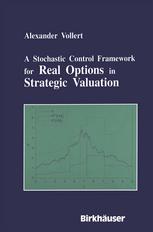

Most ebook files are in PDF format, so you can easily read them using various software such as Foxit Reader or directly on the Google Chrome browser.
Some ebook files are released by publishers in other formats such as .awz, .mobi, .epub, .fb2, etc. You may need to install specific software to read these formats on mobile/PC, such as Calibre.
Please read the tutorial at this link. https://ebooknice.com/page/post?id=faq
We offer FREE conversion to the popular formats you request; however, this may take some time. Therefore, right after payment, please email us, and we will try to provide the service as quickly as possible.
For some exceptional file formats or broken links (if any), please refrain from opening any disputes. Instead, email us first, and we will try to assist within a maximum of 6 hours.
EbookNice Team

Status:
Available4.3
9 reviewsThe theoretical foundation for real options goes back to the mid 1980s and the development of a model that forms the basis for many current applications of real option theory. Over the last decade the theory has rapidly expanded and become enriched thanks to increasing research activity. Modern real option theory may be used for the valuation of entire companies as well as for particular investment projects in the presence of uncertainty. As such, the theory of real options can serve as a tool for more practically oriented decision making, providing management with strategies maximizing its capital market value. This book is devoted to examining a new framework for classifying real options from a management and a valuation perspective, giving the advantages and disadvantages of the real option approach. Impulse control theory and the theory of optimal stopping combined with methods of mathematical finance are used to construct arbitrarily complex real option models which can be solved numerically and which yield optimal capital market strategies and values. Various examples are given to demonstrate the potential of this framework. This work will benefit the financial community, companies, as well as academics in mathematical finance by providing an important extension of real option research from both a theoretical and practical point of view.